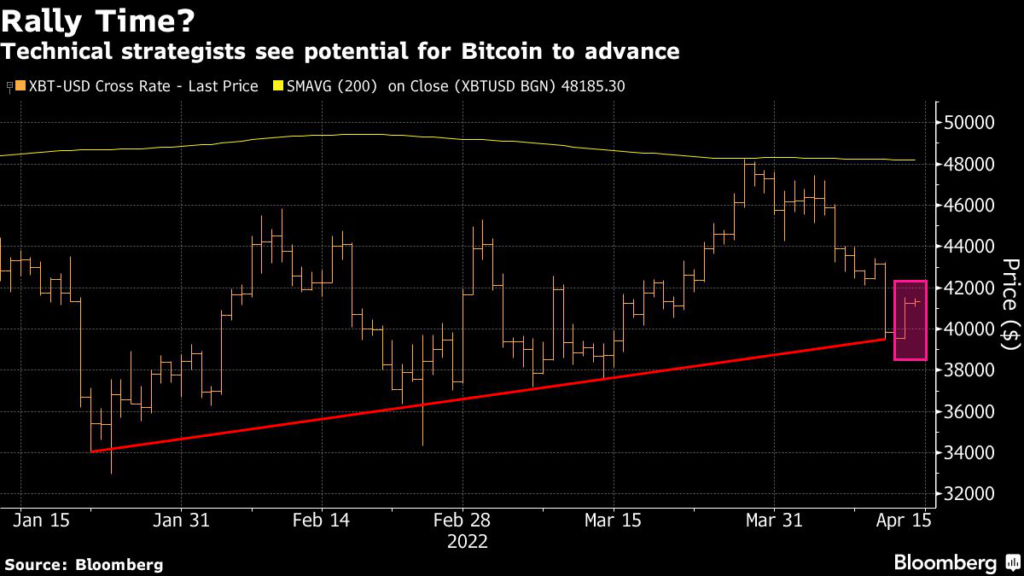(Bloomberg) — Bitcoin climbed above $41,000, advancing along with equities after China indicated it’s about to loosen monetary policy.
The largest cryptocurrency rose as much as 0.6% to $41,500 on Thursday, gaining for a second day. Katie Stockton, co-founder of Fairlead Strategies LLC, said technical indicators she follows suggest Bitcoin could be due for a short-term bounce to as high as $51,000, assuming it can break through its 200-day moving average, which stands at just above $48,000.
“We expect an oversold bounce and a higher low,” Stockton said.
Bitcoin has been largely stuck in a range of about $35,000 to $45,000 this year. A brief breakout to touch the 200-day moving average in late March was followed by a drop of as much as 19%, as concerns about monetary tightening triggered declines across risk assets. During that period, the token’s correlation with large technology stocks rose to a record.
The tighter link with stocks worked in crypto’s favor on Thursday, as coins broadly tracked advances in Asian stock markets. China’s State Council said Wednesday it will “step up financial support to the real economy, especially industries and small businesses that have been hit hard by the pandemic.”
“Bitcoin looks attractive to buy dips after falling to test a nearly three-month trend connecting prior lows since early January,” said Mark Newton, managing director and head of technical strategy at Fundstrat. The token “should bounce over the next week, with upside targets at $43,750 up to $44,200 which looks like the first meaningful upside target,” he added.
Bitcoin’s struggles have shined a spotlight on so-called altcoins like Cardano, Avalanche and Solana, which have outperformed it recently. Even the second-biggest token Ether is up 24% in the past month, compared with Bitcoin’s rise of around 7%.
Read more: Crypto ‘Altcoin Season’ Returns as Bitcoin Dominance Fades
Both Stockton and Newton offered notes of caution about the sustainability of Bitcoin’s recovery. Newton said the bounce will provably be short-lived, and “movement back above $48,248 would be necessary to expect the start of a new multi-week or multi-month rally had begun.”
Should Bitcoin fall back below $40,000, it would run the risk of sliding to a “secondary support” level of close to $27,200,” according to Stockton. Bitcoin hasn’t traded that low since December 2020.
More stories like this are available on bloomberg.com
©2022 Bloomberg L.P.











